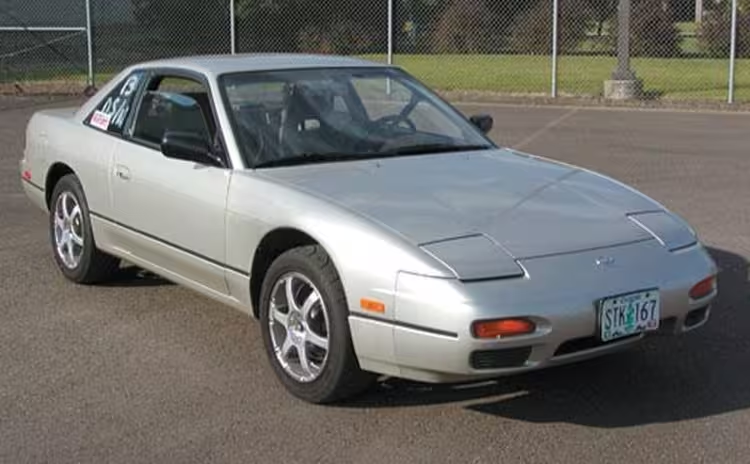When Nissan introduced the 240SX in the fall of 1988, some said the spiritual successor of the original 240Z had returned. Enthusiasts were again treated to a car featuring a solid rear-wheel-drive chassis and enough torque to make most tugboat owners jealous. More important, this unique combination was wrapped in a slickly styled package that stood head and …
How to Spot Them
The earlier S13-chassis 240SX is more wedge-shaped on the outside, yet the car’s interior is softer and more “organic” than its successor.
In a world of rounded sport coupes, the original 240SX stands out, thanks to a sharply pointed nose fitted with flip-up headlamps and two small nostrils. It’s styled in the same vein as the Porsche 944 and second-generation Mazda RX-7.
Introduced for the 1989 model year, the 240SX was offered with several trim grades. The fastback models feature a unique blacked-out treatment for the roof pillars, while the more upright notchback does away with this feature, giving the car a more formal roofline. High-end notchbacks received two-tone paint jobs, with the lower body moldings painted black.
Pressed steel 15×6-inch wheels fitted with hubcaps were standard on the base-model 240SX. Nissan shod the 240SX’s upmarket SE and XE models with alloys. On early SEs and XEs these wheels have a 12-hole teardrop pattern reminiscent of early Volkswagen 16-valve alloy wheels, while later cars sport bright machine-finished seven-spoke wheels. All use a common 4×114.5mm bolt pattern, and the stock offset measures 40mm.
For the performance minded, Nissan also offered a handling package for the 240SX. Cars equipped with the package were upgraded to “summer compound” Bridgestone RE-88 205/60R15 tires instead of the standard 195/60R15 Bridgestone SF-406s.
Inside, S13 cars feature a molded dash fitted with a domed instrument pod behind a three-spoke steering wheel. Early S13 cars also have motorized shoulder belts, which run along the doorjamb. Front-seat occupants still had to buckle their lap belts, however. Another feature of early S13s is the car’s monoform seats, which have a smooth, one-piece molded look. Luckily for the enthusiast, their shape manages…
Click Here to Read the Full Original Article at Grassroots Motorsports Online Articles…

